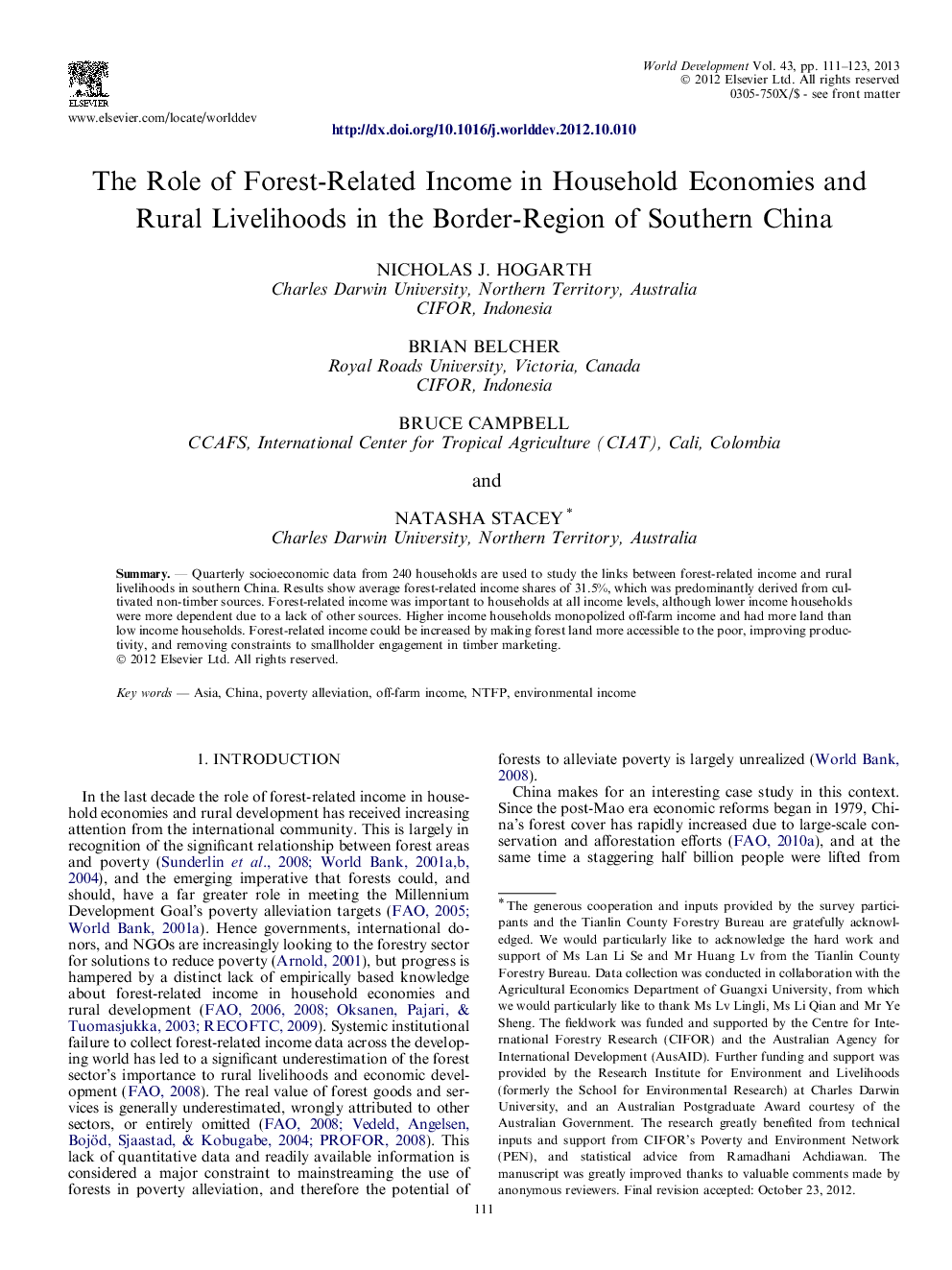| Article ID | Journal | Published Year | Pages | File Type |
|---|---|---|---|---|
| 7395547 | World Development | 2013 | 13 Pages |
Abstract
Quarterly socioeconomic data from 240 households are used to study the links between forest-related income and rural livelihoods in southern China. Results show average forest-related income shares of 31.5%, which was predominantly derived from cultivated non-timber sources. Forest-related income was important to households at all income levels, although lower income households were more dependent due to a lack of other sources. Higher income households monopolized off-farm income and had more land than low income households. Forest-related income could be increased by making forest land more accessible to the poor, improving productivity, and removing constraints to smallholder engagement in timber marketing.
Related Topics
Social Sciences and Humanities
Economics, Econometrics and Finance
Economics and Econometrics
Authors
Nicholas J. Hogarth, Brian Belcher, Bruce Campbell, Natasha Stacey,
